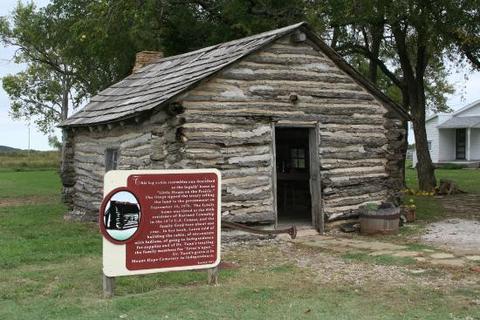Authors:
Historic Era: Era 8: The Great Depression and World War II (1929-1945)
Historic Theme:
Subject:
November 2020 | Volume 65, Issue 7


Authors:
Historic Era: Era 8: The Great Depression and World War II (1929-1945)
Historic Theme:
Subject:
November 2020 | Volume 65, Issue 7
Editor's Note: We were devastated to learn that John Miller, a longtime professor of history at South Dakota State University, passed away after submitting the following essay to American Heritage. John was the author of two definitive books on Wilder, and will be sorely missed by the university community and the generations of students he inspired since joining the faculty in 1973.

In writing her much beloved Little House on the Prairie novels set on the late 19th century western frontier, Laura Ingalls Wilder aimed her books at young readers — readers who were approximately the same age that her protagonist (a fictionalized version of herself) had been at the time the action took place. It is noteworthy, however, that countless adults have discovered the volumes to be equally entrancing, many of them reading the entire series of eight books over and over again.
The books, which have sold between forty and sixty million copies in more than two dozen languages, are admired in equal measure for their emotionally compelling stories, their moral lessons and patriotism, and for the way they sum up an entire period of American history.
Wilder has been considered under many guises — as a pioneer girl, as a much beloved children’s author, as a memoirist, as a popularizer of history, as a journalist, as a moralist, and as a women’s advocate. Another way of thinking about her is as a regionalist, specifically as a resident of and commentator on the Middle West. Wilder’s Midwestern origins and residency were crucial to her identity and to her art, and they help us better understand who she was and what she wrote.
As she was growing up, Laura's family bounced around on the Midwestern prairies, hills, and woodlands of Wisconsin, Kansas, Minnesota, Iowa, and Dakota Territory before the latter became a state in 1889. By that time, she was twenty-two years old, four years after marrying Almanzo Wilder, the event occurring at the end of her final Little House book, which brought the series to a decisive conclusion.
Born in a log cabin in the Big Woods of Wisconsin near the little town of Pepin on the Mississippi River, Wilder moved along with her family, first to Indian Territory in southern Kansas; then back to Wisconsin; on to Walnut Grove, Minnesota; then to Burr Oak, Iowa; followed by a return to Walnut Grove and finally a move to De Smet in Dakota Territory.
From there, after a brief stay in the Florida panhandle and a short time living with her husband’s family in Spring Valley, Minnesota, Wilder and her husband established themselves on a small farm one mile east of the town of Mansfield in the south-central Missouri Ozarks. They remained there